Objectif
MYKI aims at developing and clinically evaluating a dexterous hand prosthesis with tactile sensing which is naturally controlled and perceived by the amputee. This will be possible by overcoming the conventional approaches based on recording electrical signals from the peripheral nervous system (nerves or skeletal muscles) through the development of a radically new Human-Machine Interface (HMI) based on magnetic field principles, both able to decode voluntary motor commands and to convey sensory feedback to the individual. Core of this system is a multitude of magnets implanted in independent muscles and external magnetic readers/drivers (MRDs) able to (i) continuously localize the movements of the magnets and, at specific times, (ii) induce subtle movements in specific magnets. In fact, as a magnet is implanted it will travel with the muscle it is located in, and its localization will provide a direct measure of the contraction/elongation of that muscle, which is voluntarily controlled by the central nervous system. In this way it will be possible to decode the efferent signals sent by the brain by observing a by-product of the muscle fibres recruitment. On the other hand, a movement induced in the implanted magnet by the external MRD, could provide a perceivable stimulus, conveyed to the brain by means of the peripheral sensory receptors present in the muscle (e.g. muscle spindles or Golgi tendon organ) or in the neighbouring skin (tactile mechanoreceptors). In this way we aim to provide tactile and/or proprioceptive sensory information to the brain, thus restoring the physiological sensorimotor control loop. Remarkably, with passive magnetic tags (that do not require to be powered-on) and wearable readers/drivers, it will be possible to implement a wireless, bidirectional HMI with dramatically enhanced capabilities with respect to the state of the art interfaces, as illustrated in this proposal.
Champ scientifique (EuroSciVoc)
CORDIS classe les projets avec EuroSciVoc, une taxonomie multilingue des domaines scientifiques, grâce à un processus semi-automatique basé sur des techniques TLN. Voir: Le vocabulaire scientifique européen.
CORDIS classe les projets avec EuroSciVoc, une taxonomie multilingue des domaines scientifiques, grâce à un processus semi-automatique basé sur des techniques TLN. Voir: Le vocabulaire scientifique européen.
- sciences naturelles sciences biologiques neurobiologie
- sciences naturelles sciences chimiques chimie inorganique métal de transition
- ingénierie et technologie génie électrique, génie électronique, génie de l’information ingénierie électronique capteurs
- sciences médicales et de la santé biotechnologie médicale génie tissulaire pancréas artificiel systèmes de surveillance continue du glucose
- sciences médicales et de la santé biotechnologie médicale implant
Vous devez vous identifier ou vous inscrire pour utiliser cette fonction
Nous sommes désolés... Une erreur inattendue s’est produite.
Vous devez être authentifié. Votre session a peut-être expiré.
Merci pour votre retour d'information. Vous recevrez bientôt un courriel confirmant la soumission. Si vous avez choisi d'être informé de l'état de la déclaration, vous serez également contacté lorsque celui-ci évoluera.
Mots‑clés
Les mots-clés du projet tels qu’indiqués par le coordinateur du projet. À ne pas confondre avec la taxonomie EuroSciVoc (champ scientifique).
Les mots-clés du projet tels qu’indiqués par le coordinateur du projet. À ne pas confondre avec la taxonomie EuroSciVoc (champ scientifique).
Programme(s)
Programmes de financement pluriannuels qui définissent les priorités de l’UE en matière de recherche et d’innovation.
Programmes de financement pluriannuels qui définissent les priorités de l’UE en matière de recherche et d’innovation.
-
H2020-EU.1.1. - EXCELLENT SCIENCE - European Research Council (ERC)
PROGRAMME PRINCIPAL
Voir tous les projets financés dans le cadre de ce programme
Thème(s)
Les appels à propositions sont divisés en thèmes. Un thème définit un sujet ou un domaine spécifique dans le cadre duquel les candidats peuvent soumettre des propositions. La description d’un thème comprend sa portée spécifique et l’impact attendu du projet financé.
Les appels à propositions sont divisés en thèmes. Un thème définit un sujet ou un domaine spécifique dans le cadre duquel les candidats peuvent soumettre des propositions. La description d’un thème comprend sa portée spécifique et l’impact attendu du projet financé.
Régime de financement
Régime de financement (ou «type d’action») à l’intérieur d’un programme présentant des caractéristiques communes. Le régime de financement précise le champ d’application de ce qui est financé, le taux de remboursement, les critères d’évaluation spécifiques pour bénéficier du financement et les formes simplifiées de couverture des coûts, telles que les montants forfaitaires.
Régime de financement (ou «type d’action») à l’intérieur d’un programme présentant des caractéristiques communes. Le régime de financement précise le champ d’application de ce qui est financé, le taux de remboursement, les critères d’évaluation spécifiques pour bénéficier du financement et les formes simplifiées de couverture des coûts, telles que les montants forfaitaires.
ERC-STG - Starting Grant
Voir tous les projets financés dans le cadre de ce programme de financement
Appel à propositions
Procédure par laquelle les candidats sont invités à soumettre des propositions de projet en vue de bénéficier d’un financement de l’UE.
Procédure par laquelle les candidats sont invités à soumettre des propositions de projet en vue de bénéficier d’un financement de l’UE.
(s’ouvre dans une nouvelle fenêtre) ERC-2015-STG
Voir tous les projets financés au titre de cet appelInstitution d’accueil
La contribution financière nette de l’UE est la somme d’argent que le participant reçoit, déduite de la contribution de l’UE versée à son tiers lié. Elle prend en compte la répartition de la contribution financière de l’UE entre les bénéficiaires directs du projet et d’autres types de participants, tels que les participants tiers.
56127 PISA
Italie
Les coûts totaux encourus par l’organisation concernée pour participer au projet, y compris les coûts directs et indirects. Ce montant est un sous-ensemble du budget global du projet.


